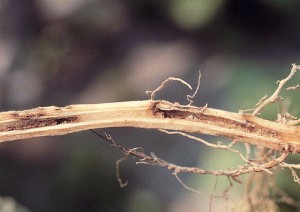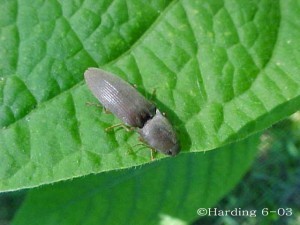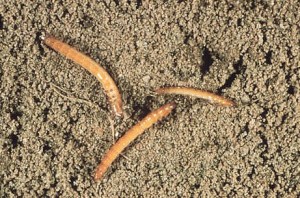Soil Pests – Wireworms
go.ncsu.edu/readext?66292
en Español / em Português
El inglés es el idioma de control de esta página. En la medida en que haya algún conflicto entre la traducción al inglés y la traducción, el inglés prevalece.
Al hacer clic en el enlace de traducción se activa un servicio de traducción gratuito para convertir la página al español. Al igual que con cualquier traducción por Internet, la conversión no es sensible al contexto y puede que no traduzca el texto en su significado original. NC State Extension no garantiza la exactitud del texto traducido. Por favor, tenga en cuenta que algunas aplicaciones y/o servicios pueden no funcionar como se espera cuando se traducen.
Português
Inglês é o idioma de controle desta página. Na medida que haja algum conflito entre o texto original em Inglês e a tradução, o Inglês prevalece.
Ao clicar no link de tradução, um serviço gratuito de tradução será ativado para converter a página para o Português. Como em qualquer tradução pela internet, a conversão não é sensivel ao contexto e pode não ocorrer a tradução para o significado orginal. O serviço de Extensão da Carolina do Norte (NC State Extension) não garante a exatidão do texto traduzido. Por favor, observe que algumas funções ou serviços podem não funcionar como esperado após a tradução.
English
English is the controlling language of this page. To the extent there is any conflict between the English text and the translation, English controls.
Clicking on the translation link activates a free translation service to convert the page to Spanish. As with any Internet translation, the conversion is not context-sensitive and may not translate the text to its original meaning. NC State Extension does not guarantee the accuracy of the translated text. Please note that some applications and/or services may not function as expected when translated.
Collapse ▲
Wireworm damage on a tobacco stalk. Photo: S. Southern
Biology
Wireworms (the name for the larvae of a family of beetles commonly known as click beetles, Elateridae) damage tobacco by tunneling into the stalk below the soil surface. This may kill or stunt plants and possibly open even resistant varieties to soil-borne diseases, although data on this relationship is limited. Stunting and the need to reset plants can result in an uneven, costly, and difficult-to-manage crop. Under good growing conditions, tobacco usually recovers from wireworm damage with little to no yield loss. However, if conditions are less favorable or if certain diseases are present, yield may be reduced.

Adult click beetle

Wireworms, the click-beetle larvae, live in the soil. Photo: S. Southern
Thresholds and Management
Wireworms are already present in the soil at transplanting (eggs are laid on the soil in the summer and early fall of the previous year). It is not possible to control wireworms with post-transplanting rescue treatments; growers must decide in advance whether you need to use soil-applied insecticides. If there is a history of wireworms, if the field was weedy or fallow, or if the field is heavily infested with soil-borne diseases such as black shank and Granville wilt, a preventive treatment is probably justified. In other cases, the decision is less obvious. Insurance treatments for wireworms add to the costs of production and add pesticides to the environment.
Either contact insecticides (Furadan, Lorsban, Mocap, Capture) or systemic insecticides (Admire, Platinum, Brigadier) can be used for wireworm control. Both types have provided good control in tests, but the systemics also provide control of aphids and flea beetles. Whether you choose a contact or a systemic, application techniques are important. (1) Broadcast materials should be thoroughly incorporated in the top 6 inches of soil (this usually requires two passes with incorporation equipment). It is also important to give broadcast insecticides time to work before transplanting; at least 2 weeks are recommended unless the label says otherwise. (2) For systemics applied in the greenhouse, apply materials evenly and wash them off thoroughly to move the insecticide to the potting soil. (3) For transplant water treatments, carefully check the calibration of setters and be careful not to let concentrations (rates) build up when refilling partially empty water tanks. This is particularly important with more concentrated formulations of insecticides. Contact and systemic insecticides for wireworm control should not be combined as the benefit of these is not additive. When selecting soil-applied insecticides, always consider the possible effect on groundwater and surface water.
See the North Carolina Agricultural Chemicals Manual for registered materials, rates, and applications recommendations.
Biological control
Soil dwelling entomopathenogenic nematodes and fungi may infect wireworm larvae. Limited trials with commercial versions of these biological control agents in other crops have shown variable results. This document from Virginia Cooperative Extension provides information on wireworm management in Virginia potatoes, including information on nematode and fungal biological control agents.


